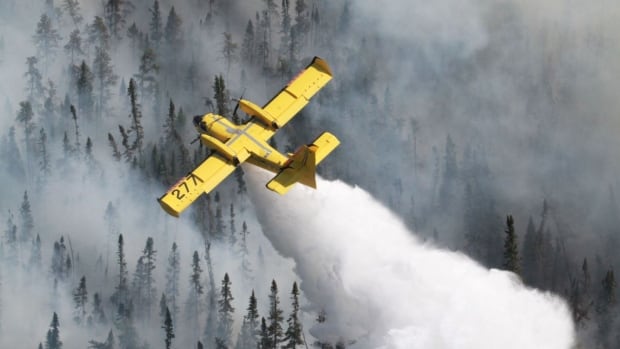
Forest fire season off to a quiet start in Ontario, but experts warn of possibly challenging year ahead
CBC
April marks the official beginning of the forest fire season in Ontario, and while experts in the field are hoping for a quieter season than last, they're already preparing for the worst.
Last year, wildfires forced evacuations of a number of remote northwestern Ontario First Nations and burned more hectares of land in the province in 2021 than in any other year in history.
"It was a little intense at times," said Chris Marchand, a fire information officer with Ontario's Aviation Forest Fire and Emergency Services (AFFES), referring to the 2021 season.
"What is quite different about our situation in 2022 thus far is that in most places, at least around the northwest, are starting the season with a lot more snow on the ground than we had on at this time last year," said Marchand, who is based at the service's northwest regional centre in Dryden.
Last year, April was an active month for forest fires in northwestern Ontario, with two fires being reported on opening day of the season.
So far in 2022, much of northwestern Ontario is seeing significant snowfall one week into April, as yet another system passes through the region.
The prolonged snow coverage will help to slow the start of the fire season according to Marchand, but until it all melts it's unclear how the winter will impact the spring and summer months on the landscape.
"Although the amount of snow depth plays a role in regulating the moisture content of the vegetation, the amount of rain that we saw last fall and weather conditions once an area becomes snow free, those are also important factors when determining how susceptible an area will be to wildland fire," Marchand explained.
While the forecast and snow coverage might look promising for keeping forest fires tamed, conditions can still change quickly and crews are preparing for any outcome, said Marchand.
For now, the snowy winters in the northwest and through to parts of the prairies, have been helpful with improving the drought forecast in multiple regions.
The February drought monitor report from Agriculture and Agri-Food Canada showed many areas were still seeing severe drought to abnormally dry conditions. But in March, most areas have seen drought improvement and drought removal, according to the government agency.
Avoiding drought conditions at the start of the season might not mean parts of Ontario are out of the woods when it comes to wildfires.
Graham Saunders, an expert in climatology living in Thunder Bay, said forest fires seasons through the last few decades have shown rain is the critical element leading into the spring.
"If I go back to 1996, which was another super snow year, at this time of year we had a great deal of snow on the ground, and by the end of May, we had a serious fire season," he said, adding there was a lack of rain after the spring melt that year.











